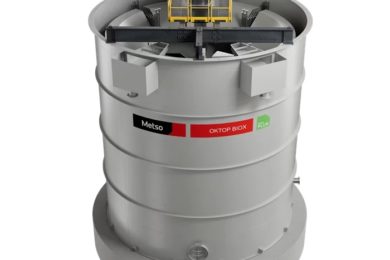 CleanTeQ’s recently appointed CEO Cory Williams aims to developing opportunities for the company and its unique intellectual property and technology portfolio, in Asia, as a priority. CleanTeQ is a world leader in water treatment and resource recovery technology and, reportedly, the Australian leader in biological air purification. CleanTeQ develops technologies in-house and partners with leading technology suppliers worldwide. It offers a range of business models to potential clients including licensing its technology, building and commissioning complete installations (both transportable and fixed), and building and operating installations in joint ventures, in return for a share of revenues generated through resources recovered.
CleanTeQ’s recently appointed CEO Cory Williams aims to developing opportunities for the company and its unique intellectual property and technology portfolio, in Asia, as a priority. CleanTeQ is a world leader in water treatment and resource recovery technology and, reportedly, the Australian leader in biological air purification. CleanTeQ develops technologies in-house and partners with leading technology suppliers worldwide. It offers a range of business models to potential clients including licensing its technology, building and commissioning complete installations (both transportable and fixed), and building and operating installations in joint ventures, in return for a share of revenues generated through resources recovered.
CleanTeQ will also acquire mining assets where its technologies can make exploitation of uneconomic ore bodies or re-processing of tailings profitable.
In May this year, Robert Friedland made an investment in the company that gave him an 11.35% shareholding.
Clean TeQ’s Clean-iX® continuous ion exchange processes provide extraction and purification of a range of valuable metals from slurries and solutions. Originally developed by the All Russian Research Institute of Chemical Technology (ARRICT) over 40 years, Clean TeQ further developed the base technology to provide what it describes as “the most cost effective metal recovery process available.”
Clean-iX® Continuous Resin-In-Column (cLX) is a continuous counter current process that extracts metals from clarified leach solutions. Clean-iX® Elution systems use continuous counter current processing of loaded resins to produce high purity and concentration metal product solutions.
The picture shows Clean-iX® Continuous Resin-In-Pulp (cRIP), a continuous counter current process that directly extracts metals from leached pulps (up to 50% w/w solids). The resin is mixed directly with the slurry in a series of contactors and moved counter current to the flow of slurry. In some applications, Continuous Resin-In-Leach (cRIL) gives higher leach recovery rates with a reduction in leaching lixiviants. Here, resin is contacted with slurry during the leaching process for metal extraction








